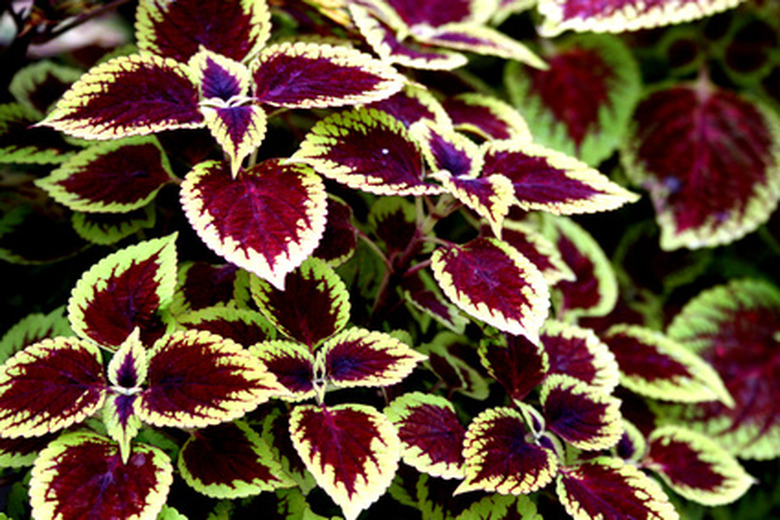How To Grow A Plant Without Roots
Things Needed
- Rooting hormone
- Plastic plant containers
- Vermiculite, perlite, construction-grade sand or compressed peat pellets
- Oven
- Cleaner
- Disinfectant
- Rubbing alcohol
- Water
- Plastic bags
- Stakes or wire loops
Growing plants without roots is a way to develop more houseplants using the ones you already have. It's a simple process with many plants, including ivies and coleus. By taking a plant stem cutting, you can propagate a new plant without using or disturbing the roots of the mother plant. The new plant can then be put into its own container. In no time, you will have several plants that resemble the parent plant.
Step 1
Take cuttings from healthy plants that are free of disease. The cuttings should include current and last season's growth. Cuttings from young plants do better than those from older plants.
- Growing plants without roots is a way to develop more houseplants using the ones you already have.
Step 2
Cut a piece that is 4 to 6 inches long with a sharp blade. Pruning shears or a pocket knife works well.
Step 3
Remove flowers and flower buds from the prepared cutting. Take off leaves from the lower one-third to one-half of the cutting. This frees up the energy to grow new roots instead of flowers.
Step 4
Apply a rooting hormone to the leaf nodes on the bottom half of the stem cuttings. You can buy rooting hormone at nurseries and gardening centers. Follow the application instructions. Carefully use the hormone as directed.
- Cut a piece that is 4 to 6 inches long with a sharp blade.
- Apply a rooting hormone to the leaf nodes on the bottom half of the stem cuttings.
Step 5
Fill a 6- to 8-inch plastic plant pot with sufficient rooting material. Vermiculite and perlite are lightweight and hold water well. Perlite mixed with equal parts of peat moss is one of the best rooting materials. Construction-grade sand is also a good choice, because it is course and clean. You can also use compressed peat pellets.
Step 6
Sterilize the rooting medium if it isn't new. Moisten the substance and heat it in an oven to a temperature of 150 to 200 degrees for up to one-half hour. If you are using new perlite, vermiculite or peat moss, you don't need to do this.
- Fill a 6- to 8-inch plastic plant pot with sufficient rooting material.
- If you are using new perlite, vermiculite or peat moss, you don't need to do this.
Step 7
Wash equipment and plant pots with a cleaner and disinfectant. All tools including your trowel should be cleaned the same way or dipped in alcohol.
Step 8
Stick the base of the plant or the end of the cutting into the rooting material. Push it in until it is 1 to 2 inches deep. Press the material around the plant to secure it. Water until moist.
Step 9
Root plants in compressed peat pellets using a different method. Soak and drain the pellets and put them in a plastic bag. Stick a rootless cutting in each pellet and seal the top of the bag.
- Wash equipment and plant pots with a cleaner and disinfectant.
- Stick a rootless cutting in each pellet and seal the top of the bag.
Step 10
Maintain moisture. The cuttings need a lot of humidity to grow roots. Slip a plastic bag over the plant pot and secure it until it's closed. Use stakes or wire loops to keep the plastic bag off the leaves.
Step 11
Keep the plant in a bright spot, but not in direct sunlight. If it's too hot, the plastic bag will intensify the heat and could burn the plant.
Step 12
Wait for roots to grow. The amount of time depends on the plant species. Carefully remove them periodically from the rooting medium to check for roots. Once the roots are 1 inch long or longer, the plant can be moved to another plant pot.
- The cuttings need a lot of humidity to grow roots.
- Slip a plastic bag over the plant pot and secure it until it's closed.
Tip
Clean the blade of the cutting tool with a mixture of 9 parts of water to 1 part bleach. You can also use rubbing alcohol. This will keep the blade from transmitting disease.
Warning
Do not let cuttings get dirty when rooting plants. Avoid putting rootless plants on dirty tables or in dirty plant pots. Do not use normal field soil to grow a plant without roots. It becomes too heavy and packed when wet. It also is susceptible to disease.
